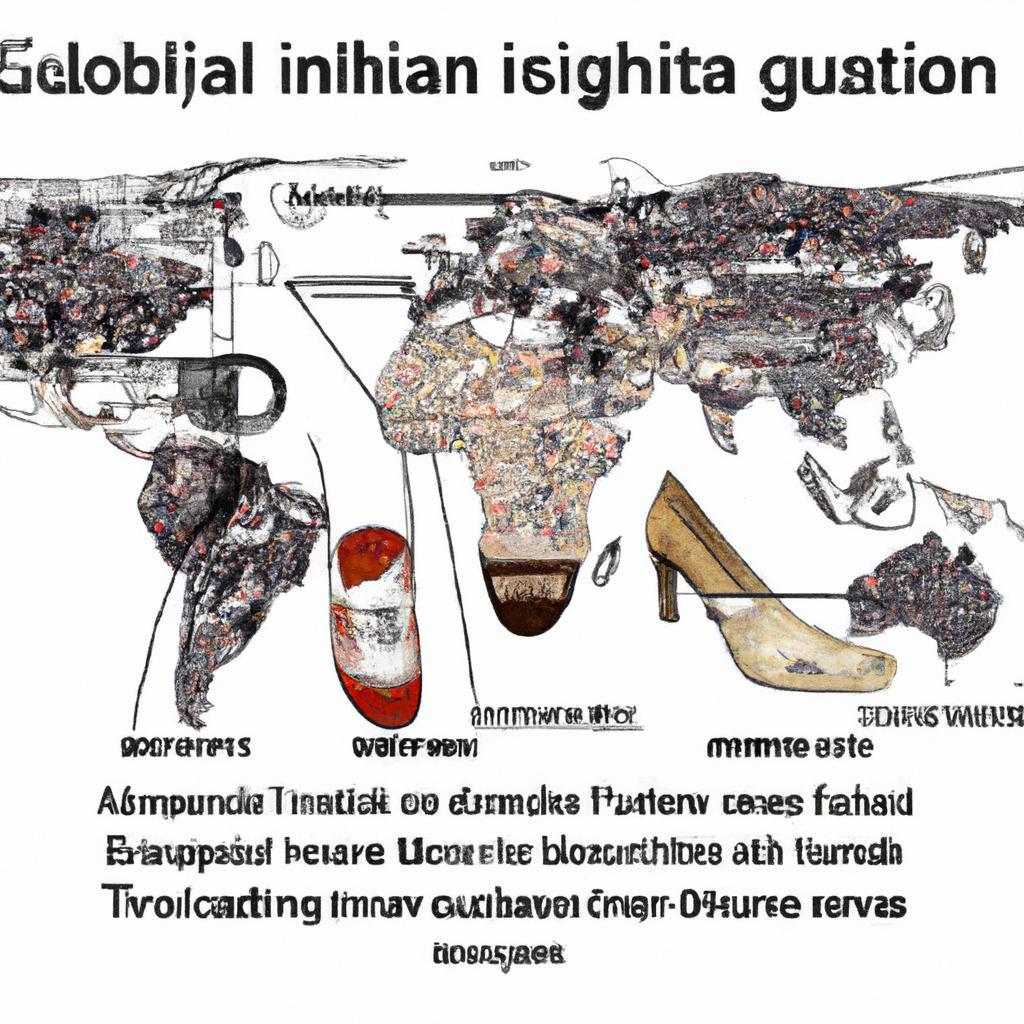In a world where fashion knows no borders, the pursuit of style often extends beyond our local boutiques and into the vibrant tapestry of global trends. Yet, as we explore international runways and the sartorial offerings from distant lands, we encounter a common dilemma: the perplexing array of clothing and shoe sizes that vary drastically from one region to another. Navigating this complex landscape can feel like an overwhelming task, especially when what fits perfectly in one country might leave you grappling with awkward sizes in another. In this article, we will embark on a journey to demystify the nuances of international sizing, equipping you with the knowledge to navigate global fashion with confidence and grace. Whether you’re shopping online from a far-flung boutique or packing for a stylish getaway, understanding these sizing systems will empower you to make informed choices that transcend geographical boundaries. Join us as we unravel the intricacies of global fashion sizing and unlock the secrets to a well-fitted wardrobe, no matter where your fashion adventures take you.
Understanding the Diversity of Global Sizing Systems
When diving into the world of fashion, it quickly becomes evident that not all clothing and shoe sizes are created equal. Each country and region has developed its own sizing system, which can lead to confusion for shoppers seeking the perfect fit. For instance, a size 8 in the United States doesn’t necessarily match the size 38 in Europe. The differences arise from various factors, including local body measurements, cultural norms, and even the manufacturing practices of clothing brands. To navigate this maze, understanding these disparities is crucial. Here are some key points to remember:
- Regional Variation: Sizes differ dramatically between continents and countries.
- Standardization Efforts: Organizations like ISO try to create unified standards, but these are not universally adopted.
- Brand Specificity: Different brands often fit differently even within the same sizing system.
One helpful way to grasp this complexity is by referring to a conversion chart that provides side-by-side comparisons of sizes from different regions. Below is a simplified table showcasing some common size equivalents for both clothing and footwear, shedding light on just how varied sizing can be:
| US Size | UK Size | EU Size |
|---|---|---|
| XS (0-2) | 4-6 | 32-34 |
| S (4-6) | 8-10 | 36-38 |
| M (8-10) | 12-14 | 40-42 |
| L (12-14) | 16-18 | 44-46 |
| XL (16-18) | 20-22 | 48-50 |
Footwear sizing presents its own challenge, as the difference between men’s and women’s sizes can also be substantial. While sometimes only one size apart, this distinction underscores the importance of referring to each brand’s specific charts for determining the right fit. Keep in mind that elements such as width, arch support, and even toe shape can affect how shoes feel, amplifying the significance of understanding global sizing implications. Embracing this variety not only leads to a more satisfying shopping experience but also opens the door to exploring the diverse styles presented by international designers.

Decoding International Clothing and Shoe Sizes
When venturing into the world of global fashion, understanding the nuances of international clothing and shoe sizes can be a game-changer. Every country has its own sizing standards, which often leads to confusion when shopping online or abroad. For instance, a size 8 in the United States may not equate to a size 8 in Europe or Asia. To navigate these variances, it’s essential to consider the following key factors:
- Measurement Systems: Different regions use different measurement systems, such as inches or centimeters.
- Body Shape Variations: Cultural preferences for body shapes can influence the cut and fit of garments.
- Size Conversion Charts: Always refer to size conversion charts to avoid missteps in your purchases.
To simplify the hunt for the right size, here’s a quick reference table showcasing common size conversions for clothing and shoes between popular regions:
| Country | Women’s Clothing Size | Men’s Clothing Size | Shoe Size (US) |
|---|---|---|---|
| United States | 8 | M | 9 |
| United Kingdom | 12 | Medium | 8 |
| Europe | 40 | 48 | 42 |
| Japan | 11 | L | 27 |
Equipped with this knowledge, you’ll be better prepared to embrace the richness of international fashion. Happy shopping as you navigate your way through sizes and styles from around the world!

Practical Tips for a Seamless Shopping Experience Across Borders
When embracing the world of international shopping, it’s important to ensure that your wardrobe fits like a glove, or in this case, a well-tailored pair of trousers. One effective way to do this is by familiarizing yourself with **size conversion charts** specific to the country of the clothing’s origin. This will help you avoid the disappointment of receiving an item that is either too small or too large. Most online retailers offer these charts, so keep an eye out for them during your shopping spree. Additionally, consider the following practical strategies:
- Always double-check sizing guides: Even well-known brands may have slight variations in their sizes.
- Read customer reviews: Insights from fellow shoppers often include feedback on fit and comfort.
- Look for return policies: Ensure the store has a clear return process in case your purchase doesn’t meet expectations.
Furthermore, another critical element of a hassle-free shopping experience is understanding the fabric and cut of the garments you’re buying. For example, certain materials may have a different feel or fit depending on the style and country of origin. Below is a handy table outlining some common fabric types and their characteristics:
| Fabric Type | Characteristics |
|---|---|
| Cotton | Breathable, versatile, good for all climates. |
| Polyester | Durable, wrinkle-resistant, often blends well. |
| Linen | Lightweight, excellent for hot weather but wrinkles easily. |
| Wool | Warm, moisture-wicking, ideal for cold environments. |
Taking the time to understand these details can save you both time and money, ultimately making your online shopping experience more enjoyable. Pairing accurate sizing with insights into the materials will elevate your global fashion endeavors, leading to a closet that reflects style and comfort no matter where it originates.
The Conclusion
As we tie the final bow on our exploration of global fashion and sizing, it’s clear that navigating the world of clothing and shoe sizes is a journey marked by diversity and complexity. Whether you’re shopping online from an international retailer or exploring local boutiques abroad, understanding the nuances of sizing can enhance your fashion experience and keep you stylishly fitted, no matter the country.
Remember, every size chart tells a story, reflecting the unique culture and standards of the region it represents. Armed with knowledge, you can confidently embrace the global marketplace, ensuring that your wardrobe is as diverse and vibrant as the fashion world itself. So, as you step into the international arena of style, may your adventures in clothing and footwear be filled with discovery, confidence, and the perfect fit. Happy shopping!
